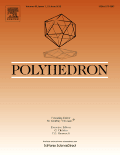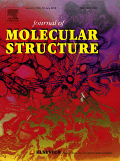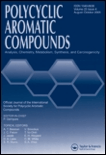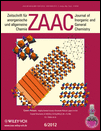
INDIAN JOURNAL OF CHEMISTRY
Scope & Guideline
Pioneering Research in Chemistry Since 1969
Introduction
Aims and Scopes
- Synthetic Chemistry:
The journal prominently features research on the synthesis of new chemical compounds, including organic molecules, coordination complexes, and nanomaterials. These studies often employ innovative methodologies and aim to enhance the efficiency and selectivity of synthetic processes. - Characterization Techniques:
Papers frequently include detailed characterization of synthesized compounds using techniques such as NMR, IR, UV-Vis spectroscopy, X-ray crystallography, and mass spectrometry. This focus ensures that the structural elucidation of new compounds is well-documented. - Biological and Pharmacological Applications:
The journal emphasizes studies that explore the biological activities of synthesized compounds, including antimicrobial, anti-inflammatory, anticancer, and antidiabetic properties. Many papers include in vitro and in silico evaluations to assess the therapeutic potential of new molecules. - Computational Chemistry:
A significant number of articles employ computational methods such as molecular docking, DFT (Density Functional Theory) calculations, and QSAR (Quantitative Structure-Activity Relationship) analysis to predict the behavior and efficacy of chemical compounds. - Green Chemistry:
The journal showcases research focused on environmentally friendly synthesis methods, including solvent-free reactions, the use of renewable resources, and catalytic processes that minimize waste.
Trending and Emerging
- Nanomaterials and Nanotechnology:
There is a growing interest in the synthesis and application of nanomaterials, particularly in fields such as catalysis, drug delivery, and environmental remediation. This reflects a broader trend in chemistry towards nanotechnology and its diverse applications. - Computational and Theoretical Chemistry:
An increase in articles utilizing computational methods for predicting chemical behavior and interactions indicates a significant trend towards integrating theoretical approaches into experimental research. - Sustainable and Green Chemistry:
Research focusing on sustainable practices and green chemistry is on the rise, with an emphasis on developing eco-friendly synthesis methods and materials that minimize environmental impact. - Biological Chemistry and Drug Development:
There is a marked increase in studies related to drug design and development, particularly those that investigate the biological activities of new compounds and their mechanisms of action, reflecting the growing intersection of chemistry with pharmacology. - Material Chemistry:
Emerging themes in materials science, particularly related to energy storage, sensors, and electronic materials, are becoming more prominent, showcasing the journal's adaptation to contemporary scientific challenges.
Declining or Waning
- Traditional Inorganic Chemistry:
Research focused solely on traditional inorganic compounds and methods has seen a decrease. The journal is shifting towards more interdisciplinary approaches that integrate inorganic chemistry with materials science and nanotechnology. - Descriptive Studies Without Novel Contributions:
Papers that merely describe known compounds or processes without introducing new methodologies or significant advancements in understanding are becoming less frequent. The journal emphasizes the importance of novel contributions to the field. - Single-Discipline Focus:
There is a noticeable decline in papers that focus exclusively on a single area of chemistry, such as solely organic or inorganic studies. The trend is moving towards interdisciplinary research that bridges multiple fields of chemistry.
Similar Journals

POLYHEDRON
Fostering Discoveries in Chemistry's Dynamic Frontiers.POLYHEDRON is a prestigious academic journal published by Pergamon-Elsevier Science Ltd, specializing in the fields of Inorganic Chemistry, Materials Chemistry, and Physical and Theoretical Chemistry. With its ISSN 0277-5387 and E-ISSN 1873-3719, the journal has been a significant outlet for groundbreaking research since its inception in 1982 and continues to be influential for scholars and practitioners. As of 2023, it holds a Q3 quartile ranking across its categorization, underscoring its impact within the scientific community with respectable Scopus Rankings that place it in the top percentiles of relevant fields. Situated in the United Kingdom, POLYHEDRON aims to foster the exchange of innovative ideas and findings related to polyhedral molecules and structures, making it an essential resource for researchers seeking to expand their knowledge and contribute to these dynamic areas of study. While currently not an Open Access journal, it remains committed to advancing education and research by providing quality content that serves both academic and practical applications.

JOURNAL OF CHEMICAL CRYSTALLOGRAPHY
Unlocking the secrets of chemical crystallography since 1994.Welcome to the Journal of Chemical Crystallography, a prominent publication dedicated to the advancement of knowledge in the fields of chemical crystallography, general chemistry, and condensed matter physics. Published by Springer/Plenum Publishers, this journal provides a critical platform for researchers, professionals, and students to disseminate and access innovative research findings and methodologies from 1994 to 2024. With an ISSN of 1074-1542 and E-ISSN 1572-8854, the journal currently holds a Q4 quartile ranking in both Chemistry and Condensed Matter Physics, reflecting its broadening scope and niche significance within the scientific community. While it operates under a traditional access model, it endeavors to promote high-quality research that advances theoretical and practical aspects of crystallography, making it an essential resource for those involved in these dynamic disciplines. Join us as we explore the intricate world of chemical structures and their properties, bridging gaps between chemistry and physics.

NATURAL PRODUCT RESEARCH
Unveiling Innovations in Bioactive ResearchNATURAL PRODUCT RESEARCH is a distinguished journal published by Taylor & Francis Ltd, dedicated to advancing the field of natural product science through the dissemination of high-quality research. Established in 2003, this journal serves as a pivotal platform for scholars in Analytical Chemistry, Biochemistry, Organic Chemistry, and Plant Science, boasting an impressive categorization including Q2 in Plant Science and Q3 in the other disciplines for 2023. With a current Scopus ranking that highlights its significance within various scientific communities, NATURAL PRODUCT RESEARCH reflects the complexities and innovations associated with natural compounds and their applications. Researchers, professionals, and students will find valuable insights and breakthroughs that contribute to the understanding of bioactive compounds and their roles in health and environmental sustainability. Access options are available, ensuring that the latest findings are accessible to a global audience. As this journal continues to publish until 2024, it remains an essential resource for those at the forefront of natural product research.

JOURNAL OF BIOLOGICAL INORGANIC CHEMISTRY
Exploring the Intersection of Chemistry and Life.JOURNAL OF BIOLOGICAL INORGANIC CHEMISTRY, published by Springer, serves as a pivotal platform for the dissemination of research that intersects the fields of biochemistry and inorganic chemistry. With a commitment to advancing our understanding of the intricate roles that inorganic elements and compounds play in biological systems, this journal addresses a diverse array of topics from metal ion interactions in biological processes to the design of biomimetic systems. Hailing from Germany and reaching a global audience, it has maintained a distinguished status in its field, achieving a Q2 ranking in Inorganic Chemistry and a Q3 ranking in Biochemistry as of 2023, reflecting its impactful contributions to the scientific community. Although currently not open access, the journal provides vital insights that are essential for researchers, professionals, and students alike, promoting knowledge and collaboration in a rapidly evolving scientific landscape. With an expansive range of articles published since 1996, the JOURNAL OF BIOLOGICAL INORGANIC CHEMISTRY continues to be an indispensable resource for anyone working at the intersection of chemistry and biology, especially in understanding the biochemical implications of inorganic substances.

Molbank
Exploring the Frontiers of Biochemistry and BeyondMolbank is an open-access journal published by MDPI, dedicated to the fields of Biochemistry, Organic Chemistry, and Physical and Theoretical Chemistry. Established in 2002, this journal has served as a vital platform for the dissemination of research findings, where researchers and professionals share original articles focusing on molecular chemistry, synthesis, and related studies. With a commitment to open access, Molbank enables global access to scientific knowledge, fostering collaboration and innovation among scientists. While currently categorized in the fourth quartile for its field rankings, it provides a unique opportunity for emerging scholars to contribute to and engage with the scientific community. The journal is based in Switzerland, operating from its office at ST ALBAN-ANLAGE 66, CH-4052 BASEL, SWITZERLAND, and continues to attract submissions until 2024. Researchers, students, and professionals looking to expand their knowledge and participate in the dialogue of current molecular chemistry can benefit significantly from engaging with the content published in Molbank.

Journal of Molecular Structure
Innovative discoveries shaping the chemistry landscape.Journal of Molecular Structure is a premier publication in the field of chemistry, offering a platform for innovative research that spans analytical, inorganic, organic chemistry, and spectroscopy. Published by Elsevier in the Netherlands, this journal is committed to advancing the understanding of molecular architecture and behavior through high-quality, peer-reviewed articles. With its impressive impact factor and a notable Scopus ranking placing it in the top quartiles among its peers, it serves as an essential resource for researchers, professionals, and students alike. The journal's open access options promote the dissemination of knowledge, ensuring that groundbreaking discoveries reach a broad audience. Established in 1967 and projected to continue through 2025, the Journal of Molecular Structure is vital for anyone engaged in the study of molecular interactions and structural analysis.

POLYCYCLIC AROMATIC COMPOUNDS
Pioneering Insights in Materials and Organic ChemistryPOLYCYCLIC AROMATIC COMPOUNDS, published by TAYLOR & FRANCIS LTD, is a pivotal journal dedicated to the study of polycyclic aromatic compounds, which play a significant role in fields spanning materials chemistry, organic chemistry, and polymers. With an ISSN of 1040-6638 and an E-ISSN of 1563-5333, this journal features a robust collection of research that informs and guides advancements in understanding the complex interactions and applications of these compounds. Having established its presence since 1990, POLYCYCLIC AROMATIC COMPOUNDS currently holds a Q3 ranking in multiple categories, including Materials Chemistry, Polymers and Plastics, and Organic Chemistry, showcasing its consistent contributions to scientific dialogues. Though traditionally not an open access journal, it provides immense value to researchers, professionals, and students seeking reliable and impactful studies. The journal is located in the United Kingdom at 2-4 PARK SQUARE, MILTON PARK, ABINGDON OR14 4RN, OXON, ENGLAND, and continues to be a trusted source for cutting-edge research in the field.

ZEITSCHRIFT FUR ANORGANISCHE UND ALLGEMEINE CHEMIE
Unveiling the Secrets of Inorganic SubstancesZEITSCHRIFT FUR ANORGANISCHE UND ALLGEMEINE CHEMIE, published by WILEY-V C H VERLAG GMBH, is a pivotal journal in the field of inorganic chemistry, catering to the needs of researchers, professionals, and students seeking to advance their understanding of this dynamic discipline. With its historical roots dating back to 1892 and a commitment to high-quality research, this journal provides a platform for the dissemination of significant findings related to inorganic substances and their general chemistry. Although currently not an open-access journal, it holds a competitive position with an impact factor placing it in the Q3 quartile of the Inorganic Chemistry category, ranking #57 out of 79 in Scopus. Situated in Germany, this journal not only connects past and present research endeavors but also aims to foster innovation and collaboration within the inorganic chemistry community. Whether you are exploring fundamental concepts or groundbreaking applications, ZEITSCHRIFT FUR ANORGANISCHE UND ALLGEMEINE CHEMIE remains an invaluable resource for advancing chemical sciences.

DOKLADY CHEMISTRY
Unveiling the latest breakthroughs in chemical research.DOKLADY CHEMISTRY is an esteemed academic journal published by MAIK NAUKA/INTERPERIODICA/SPRINGER, focusing on the dynamic field of chemistry. Established in 1996, this journal serves as a significant platform for disseminating cutting-edge research, reviews, and significant developments in various areas of chemistry, including but not limited to general and miscellaneous chemistry. Currently indexed with an ISSN of 0012-5008 and E-ISSN of 1608-3113, DOKLADY CHEMISTRY maintains a commitment to academic rigor and integrity, contributing critical insights to the scientific community. Despite its Q4 ranking in the 2023 Chemistry category and a Scopus rank of #314 out of 408, this journal remains an important resource for researchers, professionals, and students eager to explore emerging trends and innovative methodologies in the field. The journal operates under a model that supports comprehensive scholarly communication, making it a key fixture among established chemistry publications.

Results in Chemistry
Transforming Chemistry Research into Global ImpactResults in Chemistry is a prominent journal published by Elsevier, dedicated to fostering innovation and disseminating cutting-edge research in the field of chemistry. With an ISSN of 2211-7156, this open-access journal has been committed to making scientific knowledge widely available since 2019, aligning with the global trend towards accessibility in research. Based in the Netherlands, it features interdisciplinary studies that span the breadth of general chemistry, contributing significantly to the academic dialogue within the scientific community. Despite currently holding a Q3 ranking in the miscellaneous category of chemistry and occupying the 228th position out of 408 in Scopus rankings, the journal is poised for growth, aiming to enhance its impact and visibility. Researchers, professionals, and students alike will find invaluable resources and insights within its pages, making Results in Chemistry an essential platform for those looking to stay abreast of advancements and trends in chemistry research up to the year 2024.